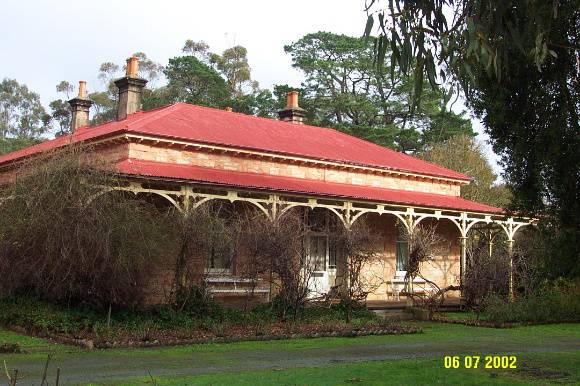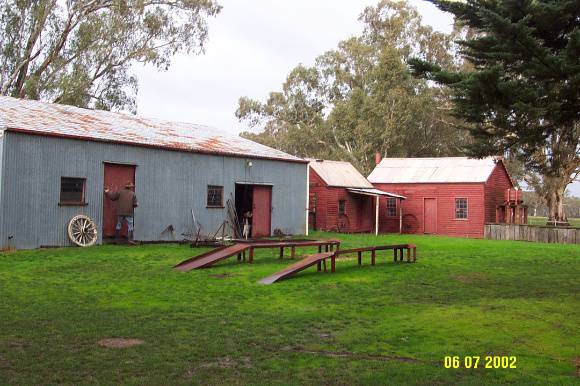| Back to search results » | Back to search page » |
|
GLENISLA HOMESTEAD COMPLEX
LocationHenty Highway, GLENISLA VIC 3408 - Property No 049
File Number601935/0151LevelStage 2 study complete |
|
Statement of Significance
What is Significant?
Glenisla squatting run was established in 1843 by a Scotsman named Simpson who named the run after a kirkdom near Balmoral. In 1860 Charles Carter and Sons acquired the run. From the 1870s the Carter family owned or leased vast tracts of Grampian and Wimmera pastoral lands, including the sheep and cattle stations at Rosebrook, Moora Moora, North Brighton, Walmer, Kelwell, Wartook, Pine Plains and North Walmer. The current homestead was built for one of Carter's sons, Samuel. Among Samuel Carter's many public offices was an eight year stint as Protector for the Aborigines for the Glenisla district, Chairman of the Wimmera hire Water Trust, and Commissioner for the Wimmera Waterworks Trust. Construction of the homestead was commenced in 1873, but delayed because of a dispute over the siting of a government road reserve. It was completed in c1875. The homestead was strategically located on the overland gold route from Adelaide to the Victorian gold fields, as well as on the later north-south mail route between Horsham and Hamilton. The single storey homestead is constructed of Mount Bepcha Grampians sandstone and is formed by a symmetrically arranged group of four buildings - the house, the kitchen block, the servants quarters and a store building arranged around a large rear stone paved courtyard. The axis of the buildings runs directly north-south. In the courtyard are half cylinder sandstone spoon drains which lead to timber box drains and an ovoid water tank beneath the courtyard. The courtyard has a simple timber post verandah on three sides. A more elaborate verandah with moulded timber posts and brackets surrounds the front of the house. The stables behind the house are believed to have been constructed in the 1850s and are built of sawn horizontal slabs with a later corrugated iron roof. Two simple weatherboard clad mens huts stand close to the stables.
How is it Significant?
Glenisla is of historical and architectural significance to the State of Victoria and to the Shire of southern Grampians.
Why is it Significant?
Glenisla is historically significant as one of the original mountain stations on the slopes of the Grampians. The station has significant historical associations with the Carter family. Samuel Carter was of considerable importance in the development of the South Wimmera and in the development of the pastoral industry of that area of the state, particularly the irrigation scheme fed by Wartook Reservoir. Glenisla is historically significant as an important centre of communication. A post office was located at the homestead until 1970 and the c.1940s telephone exchange survives in a small room off the courtyard. The old kitchen was used as the district polling booth until 1968. Glenisla is architecturally significant as the northern most pastoral station in the region built of local sandstone. The formal planning of the homestead, with the rear offices forming a protected courtyard, is unusual. It bears some comparison to the two-storey sandstone homestead Gringegalgona, built at the same time about 50km to the south-west. The stables are an excellent representative example of 1850s horizontal slab construction.
Group
Farming and Grazing
Category
Homestead Complex





